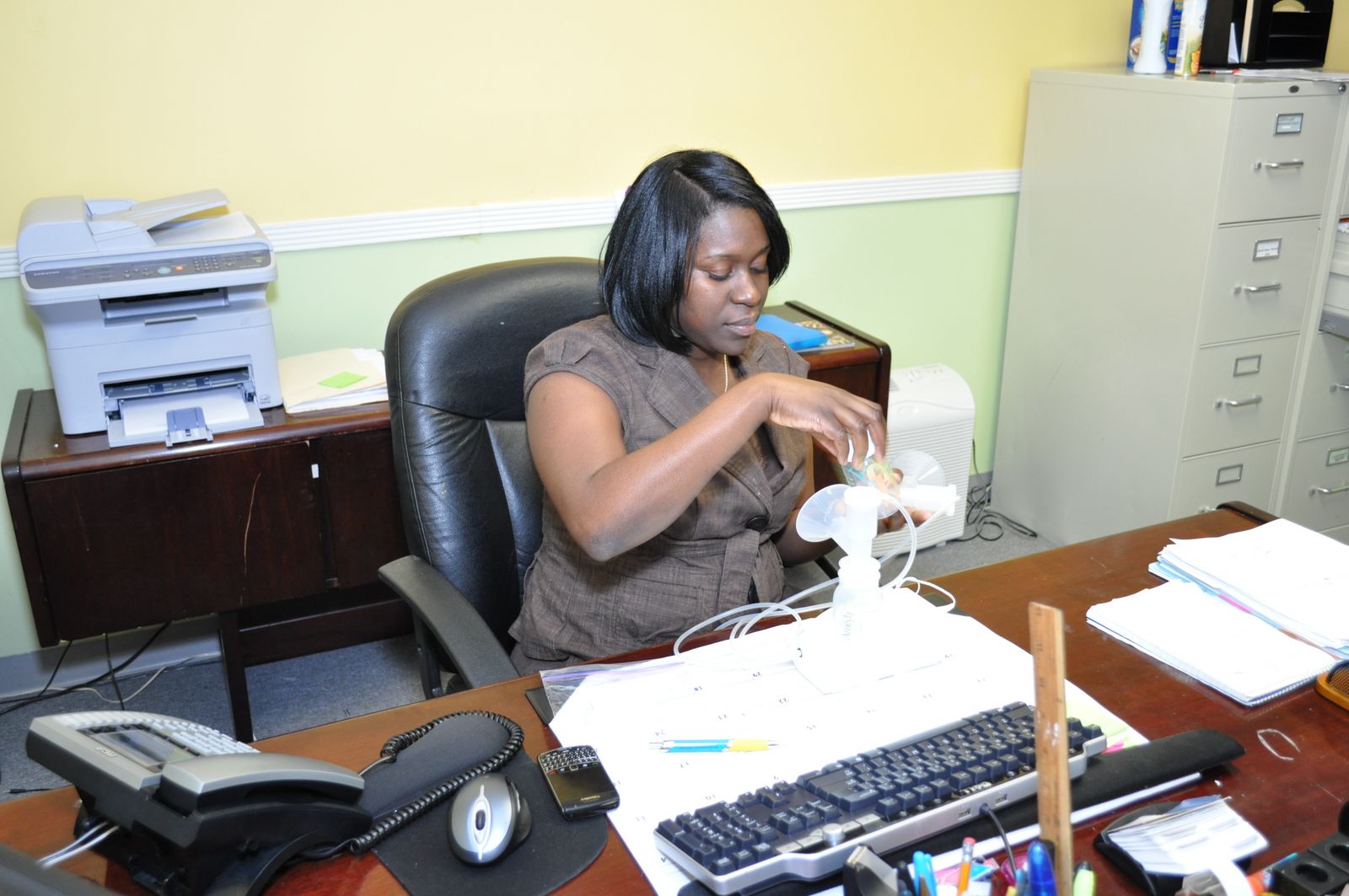Work and School - Continuing to Breastfeed
Providing Your Milk While at Work or School
You can continue to breastfeed when you return to work or school. Federal law requires employers to provide (unpaid) time and non-bathroom space for you to pump your milk (see breastfeeding laws). Be sure to speak with your supervisor or teacher about your desire to pump at work or school so that the details can be arranged ahead of time.
Providing Your Milk While at Work or School
By continuing to provide your milk to your baby, you give baby a very special gift, even when apart. This will help you keep the close bond with your baby. Your baby will continue to get the many benefits of breastmilk. Be creative! Here are some ideas from other parents. One of these tips may work well for you.
- Find a sitter who is close to where you work or attend school. Then you can go to your baby or have baby brought to you when it is time to nurse.
- If able, work or attend school from home (virtually) so you can be with your baby to nurse when needed.
- Nurse when you are with your baby. Pump your milk while you and your baby are apart. Safely store the milk for your sitter to use the next time.
- Nurse when you are with your baby. If leaving breastmilk is not an option, have the sitter give your baby formula while you are apart. You may need to express a little milk during the day for comfort in the early weeks.
Plan AheadTalk to the WIC staff about your plan to breastfeed upon returning to work or school. WIC staff can help you with suggestions about how to be ready for this so you will have enough milk for your baby, even on the first day away. Keep in mind that it is best to start preparations 10-14 days before you return to work or school. The handout Planning to Breastfeed When Away From Your Baby has many great tips.
Breast Pumps
WIC may also be able to help you get a breast pump through your medical insurance, if able, or through WIC, if not. WIC has a few different types of pumps available. Your WIC staff will determine if you are eligible, and if so, which one is the best pump for your specific needs without cost to you. Some pumps are given on loan, so you will need to return those to WIC when your loan period is over.
Avoid pumping in the first month if not separated
Keep in mind that, unless there are special circumstances, it is best not to pump milk until your baby is at least 4 weeks old. This gives you and your baby a chance to learn the process of nursing and allows your body a chance to build up your milk to the level your baby needs. Your baby will always do a better job than any pump at getting your milk out.
It is normal to get a small amount the first few times you pump
Don't get discouraged! The first few times most people pump milk, they do not get too much. Some people even just get a few drops and that is okay. Over a few days, the amount of milk they are able to pump increases. Be sure to speak with the WIC staff with any concerns that you have.
Maximizing the amount pumped
There are different things you can do to help yourself pump more milk while away from your baby. These include:
- Pumping while separated at times your baby would be nursing.
- Pumping both breasts at the same time.
- Having something with you when pumping to remind you of your baby (a photo, a recording of your baby cooing, an item of your baby's clothes).
- Massaging the breasts before and during pumping.
- Hands-on pumping (see video).
- Using the highest setting on your breast pump that is comfortable (this might not be the highest setting on your pump).
- Having the correct size breast flange (funnel-shaped piece). The size you need could change after pumping for some time. Check with WIC or a breastfeeding specialist for more information.
Feeding Pumped Milk to Your Baby
Having your sitter used baby-paced bottle feeding with your baby will also help you meet your baby's needs with your milk. This method holds the bottle in a way that allows the baby to better control how fast and how much milk is taken. It also helps the baby to stop when full. Often when feeding in this way, pumped amounts match what is consumed (See video and handout that exlpains baby-paced bottle feeding.)
If you have questions about any of this or if you are not pumping enough milk to keep up with your baby's needs, be sure to speak with the WIC staff.
| 
|

